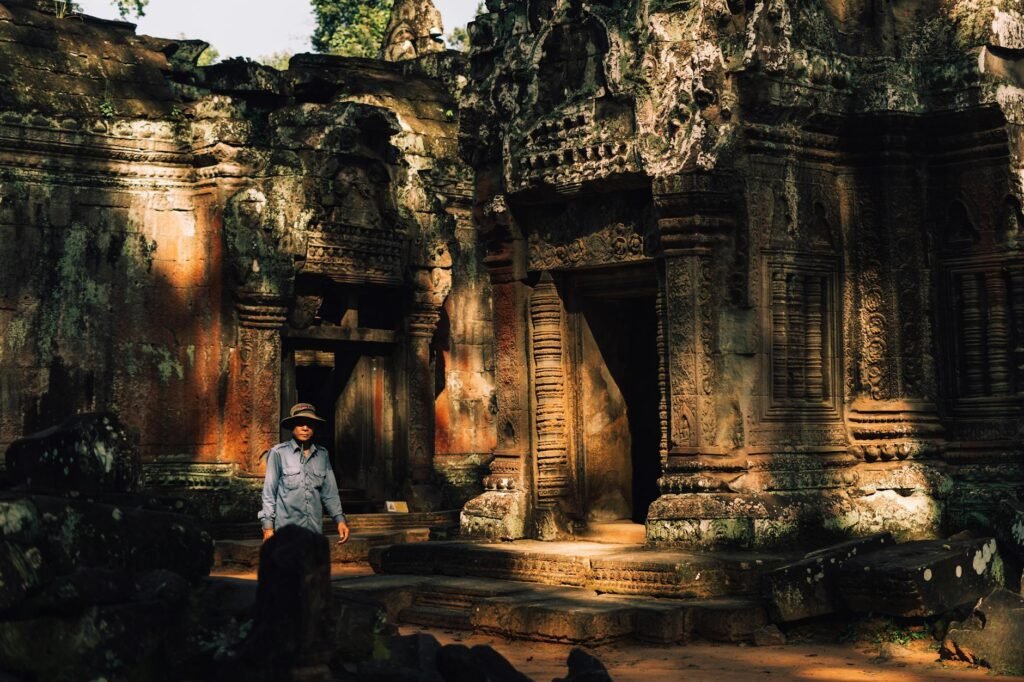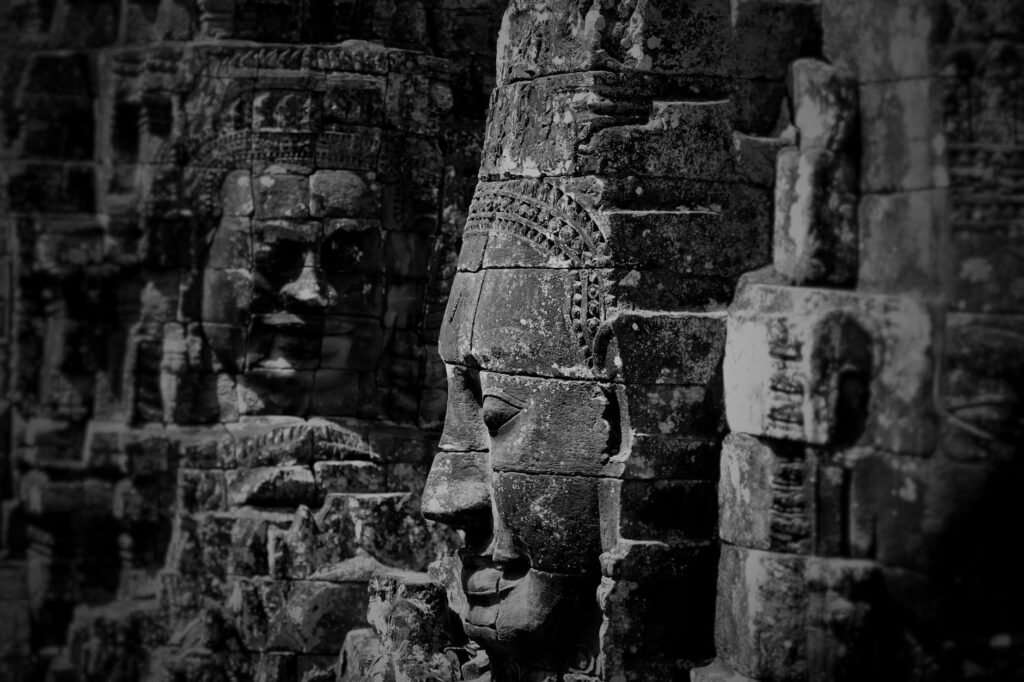The captivating world of Khmer architecture, a testament to the grandeur of the Khmer Empire, boasts structures that seamlessly blend artistry, spirituality, and engineering prowess. From towering temples to intricate carvings, its legacy continues to inspire awe and wonder. This exploration will delve into the key elements that define this remarkable architectural style.
The Rise of Khmer Architecture
The origins of Khmer architecture can be traced back to the early centuries of the Khmer Empire, evolving over centuries and reaching its zenith during the Angkorian period. Influenced by Indian temple design and local traditions, the distinctive style began to take shape, characterized by its use of laterite and sandstone, monumental scale, and intricate decorative elements. 
Key Features: Mount Meru and Symbolism
Central to Khmer temple design is the concept of Mount Meru, the mythical home of the gods in Hindu cosmology. Temples are often designed to represent this sacred mountain, with a series of concentric galleries and courtyards rising towards a central sanctuary. Each element, from the towers to the lintels, is rich in symbolism, reflecting religious beliefs and royal power. Learn more about the symbolism of Mount Meru.
Angkor Wat: The Pinnacle of Khmer Architecture
Angkor Wat, arguably the most iconic example of Khmer architecture, stands as a testament to the empire’s might and artistic sophistication. Its five towers, representing the five peaks of Mount Meru, are surrounded by vast galleries adorned with intricate bas-reliefs depicting scenes from Hindu mythology. The sheer scale and meticulous craftsmanship are breathtaking.  Explore the history of Angkor Wat.
Explore the history of Angkor Wat.
Materials and Construction Techniques
Khmer architects masterfully utilized locally sourced materials, primarily laterite and sandstone. Laterite, a reddish-brown clay, formed the core of many structures, while the more durable sandstone was used for decorative elements and key architectural features. Their advanced understanding of engineering allowed them to construct massive structures without the use of mortar, employing intricate interlocking techniques. Discover more about Khmer construction techniques.
Beyond Angkor: Exploring Other Khmer Architectural Sites
While Angkor Wat is undeniably the most famous, many other remarkable Khmer architectural sites exist throughout Cambodia and neighboring regions. Preah Khan, Ta Prohm, and Bayon are just a few examples, each with its unique features and historical significance. [IMAGE_3_HERE] Exploring these diverse sites reveals the evolution and regional variations within the broader Khmer architectural tradition. Read about other significant Khmer temples.
The Enduring Legacy
Khmer architecture continues to fascinate and inspire, representing a remarkable achievement in human creativity and engineering. Its enduring legacy is a testament to the artistic and spiritual vision of the Khmer civilization, and its influence can still be seen in Southeast Asian architecture today. Visit the official tourism site for Cambodia.
Frequently Asked Questions
What materials were primarily used in Khmer architecture? Primarily laterite and sandstone, with sandstone used for decorative elements.
What is the significance of Mount Meru in Khmer temple design? It represents the mythical home of the gods, and temples are designed to reflect this sacred mountain.
How did Khmer architects construct such massive structures without mortar? They employed intricate interlocking techniques of stone blocks.
Are there any other notable Khmer architectural sites besides Angkor Wat? Yes, many, including Preah Khan, Ta Prohm, and Bayon.
What is the best way to learn more about Khmer architecture? Visiting the sites themselves and researching online resources offer a deeper understanding.